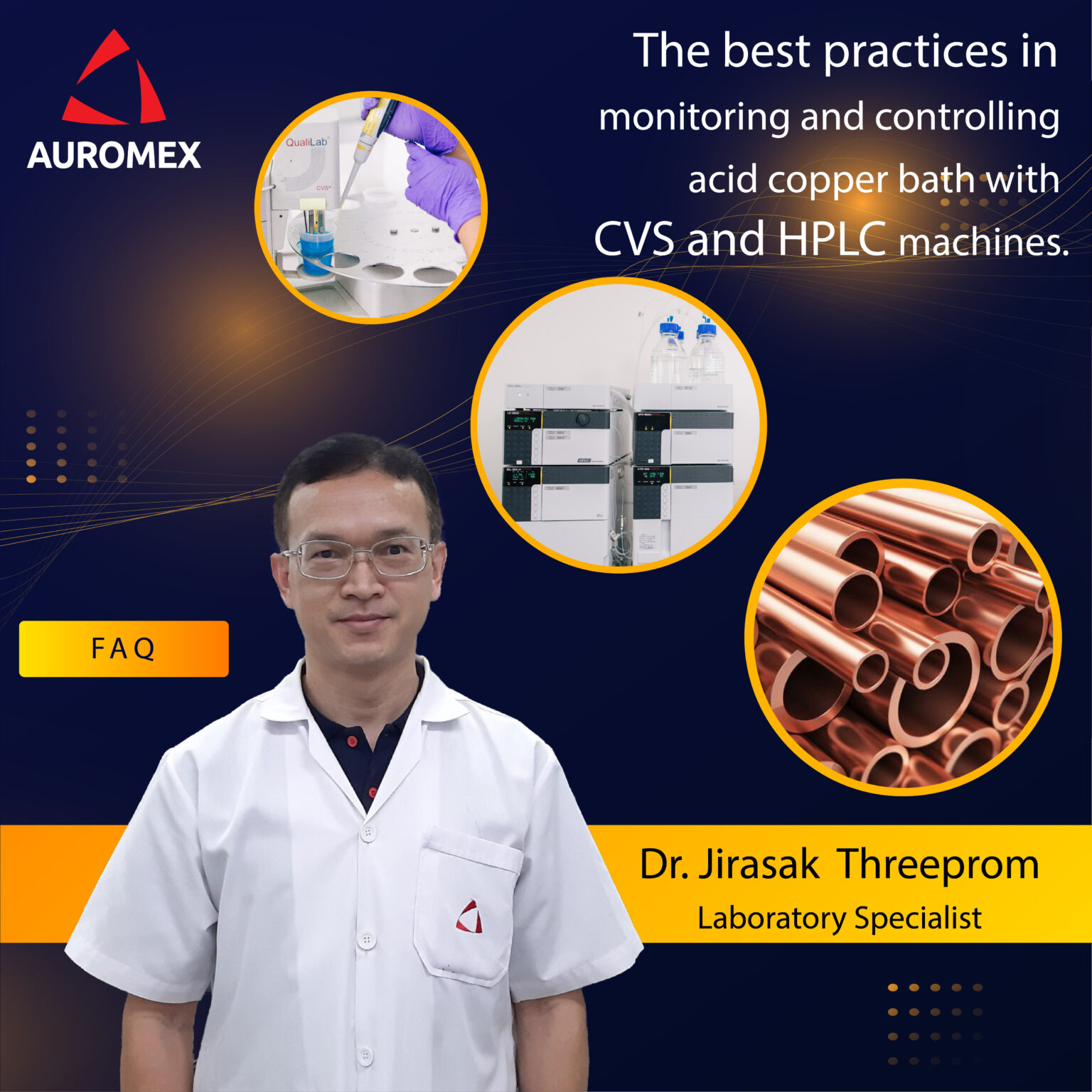

Electrolytic copper plating from sulfuric acid copper plating baths has become the method of choice for copper film deposition. This poses stringent requirements on the copper plating bath composition, and frequent chemical analysis of the plating bath for both inorganic and organic components that must be performed. Current analysis methods for acidic copper plating baths, are mainly based on a series of titrations for inorganic components (Cl-, H2SO4, Cu2+), whereas voltammetry (cyclic voltametric stripping -CVS) and chromatographic techniques (HPLC and IC) are used almost exclusively for analysis of the organic additives.
CVS has found widespread acceptance for the analysis of organic additives in copper electroplating baths. Basically, CVS is an indirect measurement technique that determines the combined electrochemical effect of the additives (not only from the active organic components, but also from some decomposition products, and chloride ion). However, the result obtained from CVS is still acceptable and reliable
The HPLC and IC methods provide a more reliable control of an operating plating bath. It is due to the active organic component can be separated from its decomposition products and other matrices contained in plating bath.
The alternative and interesting HPLC methods have been widely described using the ion pair chromatographic technique. The C-18 HPLC column, alkyl ammonium compound as the ion pairing agent, UV detection have been widely used in this analysis method
For IC method, chromatography is performed with the Dionex DX-500 IC system (Dionex Corporation, Sunnyvale, CA) consisting of a GP50 gradient pump, and LC 30 chromatography oven, and EG40 eluent generator, and AS40 autosampler, and a CD20 conductivity detector with suppressor (ASRS-300). The gradient pump delivered deionized water (18 MΩ cm) to the eluent generator, which converted the DI water to a high pure KOH eluent by an applied dc current. The KOH eluent gradient is very useful for finding optimum condition for active component separation.
Our lab service supports our customers and technical service teams in maintaining optimum performance of our products and processes, and resolving any issues. The work normally includes periodic chemical and materials analysis to provide ongoing monitoring, and investigating root cause of any outstanding issues to keep plating process stable and consistent, resulting in highest yield and benefits.